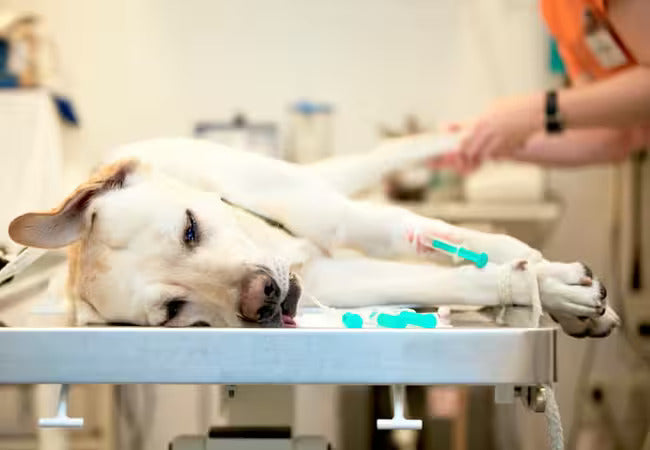Pet Anesthesia Risks 2025: 5 Vet-Confirmed Safety Alerts ⚠️🐕

In this article
5 Anesthesia Risks for Pets You Should Know in 2025 🐾
By Dr Duncan Houston BVSc
As a veterinarian, I understand that the thought of your beloved pet undergoing anesthesia can be daunting. While modern veterinary anesthesia is generally safe, it's crucial to be aware of potential risks to ensure the best care for your furry friend. Here are five anesthesia risks every pet owner should know:
1. 🐶 Breed-Specific Risks
Overview: Certain breeds have anatomical features that can complicate anesthesia.
Risks: Brachycephalic breeds like Pugs, Bulldogs, and Persian cats have shortened airways, increasing the risk of airway obstruction during anesthesia. Breeds prone to tracheal collapse, such as Yorkshire Terriers and Pomeranians, may experience increased coughing post-intubation.
Prevention Tips:
- Inform your veterinarian about your pet's breed-specific concerns.
- Ensure specialized monitoring and care during and after the procedure.
- Discuss post-operative care to manage potential complications.
2. 🐾 Age and Health Conditions
Overview: Older pets or those with underlying health issues may face increased anesthesia risks.
Risks: Conditions like heart disease, kidney or liver dysfunction, and diabetes can affect how your pet metabolizes anesthetic agents, leading to complications.
Prevention Tips:
- Conduct thorough pre-anesthetic evaluations, including blood work and imaging.
- Stabilize existing health conditions before proceeding with anesthesia.
- Consider referral to a specialist if your pet has significant health concerns.
3. 🐱 Species-Specific Considerations
Overview: Cats and dogs have different physiological responses to anesthesia.
Risks: Cats are more prone to hypothermia and may experience laryngeal spasms during intubation. Their smaller size also makes vascular access and monitoring more challenging.
Prevention Tips:
- Ensure experienced personnel handle feline anesthesia.
- Use appropriate warming techniques to maintain body temperature.
- Monitor vital signs closely throughout the procedure.
4. ⚖️ Weight-Related Risks
Overview: Both overweight and underweight pets can face anesthesia complications.
Risks: Obesity can lead to respiratory issues and difficulty in dosing, while underweight pets may have less body fat to buffer anesthetic agents, leading to prolonged recovery.
Prevention Tips:
- Maintain your pet's healthy weight through proper diet and exercise.
- Discuss weight management strategies with your veterinarian.
- Adjust anesthetic protocols based on your pet's body condition.
5. 🧪 Anesthetic Reactions and Monitoring
Overview: Adverse reactions to anesthetic agents, though rare, can occur.
Risks: Potential reactions include allergic responses, organ dysfunction, or cardiovascular complications.
Prevention Tips:
- Provide a complete medical history to your veterinarian.
- Ensure continuous monitoring of vital signs during the procedure.
- Have emergency protocols in place to address any adverse reactions promptly.
📋 Questions to Ask Your Veterinarian
Before your pet undergoes anesthesia, consider asking the following:
- Who will be monitoring my pet during the procedure?
- What monitoring equipment will be used?
- How will pain be managed post-operatively?
- What is the expected recovery time?
- Are there any specific post-anesthesia care instructions?
📱 Enhance Your Pet's Safety with Technology
Modern tools can assist in managing your pet's health effectively:
- Ask A Vet App: Access expert veterinary advice and schedule consultations conveniently.
- Woopf: Utilize training resources tailored to your pet's breed and behavior.
- Purrz: Monitor your pet's activity levels and set reminders for health check-ups and medication schedules.
🎯 Conclusion
Understanding the potential risks associated with anesthesia allows you to make informed decisions about your pet's health care. By working closely with your veterinarian and utilizing available resources, you can ensure the safest possible experience for your beloved companion.
For personalized guidance and support, visit AskAVet.com and download the Ask A Vet app today! 🐾📲






